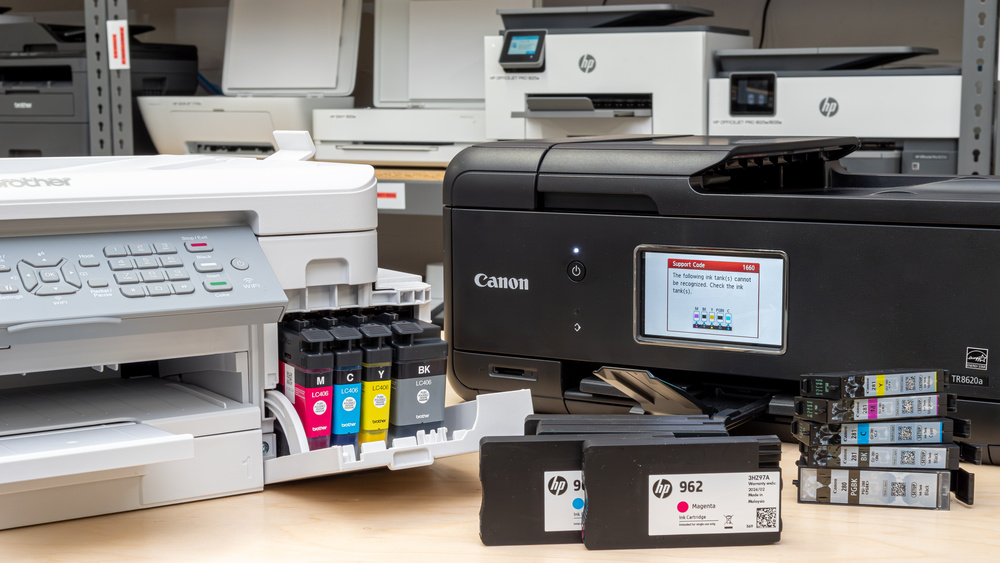Inkjet printers have become a staple in homes and offices worldwide, offering a versatile and efficient means of producing high-quality prints. These printers work by propelling tiny droplets of ink onto paper, creating text and images with remarkable precision. The technology has evolved significantly since its inception, making portable printers a popular choice for a wide range of printing needs.
The Evolution of Inkjet Technology
Inkjet printing technology has its roots in the early 1950s when researchers began experimenting with methods to control the flow of ink onto paper. However, it wasn’t until the late 1970s and early 1980s that the first commercially viable inkjet printers were developed. Companies like Canon and Hewlett-Packard (HP) were pioneers in this field, introducing models that could produce clear, sharp prints at a relatively low cost.
The technology behind inkjet printers has continuously improved over the years. Modern inkjet printers use sophisticated microprocessors and advanced print head designs to achieve higher resolutions and faster print speeds. The introduction of piezoelectric and thermal inkjet technologies has further enhanced the precision and reliability of these printers.
How Inkjet Printers Work
Inkjet printers operate on a simple yet ingenious principle. The print head, which moves back and forth across the paper, contains thousands of tiny nozzles. These nozzles release microscopic droplets of ink in precise patterns to form characters and images. There are two main types of inkjet technology: thermal and piezoelectric.
- Thermal Inkjet Printers: These printers use heat to create a bubble of ink that is expelled through the nozzle. When the ink bubble collapses, it forms a droplet that lands on the paper. This process is repeated thousands of times per second, allowing for rapid printing.
- Piezoelectric Inkjet Printers: These printers use a piezoelectric crystal that changes shape when an electric current is applied. This change in shape forces the ink out of the nozzle in controlled droplets. Piezoelectric technology allows for more precise control over the size and placement of ink droplets, resulting in higher quality prints.
Advantages of Inkjet Printers
Inkjet printers offer several advantages that make them a popular choice for both personal and professional use:
- High-Quality Prints: Inkjet printers are renowned for their ability to produce vibrant colors and sharp details. They are particularly well-suited for printing photographs and graphics.
- Versatility: Inkjet printers can handle a wide variety of media types, including glossy photo paper, matte paper, and even canvas. This versatility makes them ideal for a range of applications, from printing family photos to creating professional marketing materials.
- Affordability: Compared to other types of printers, such as laser printers, inkjet printers are generally more affordable to purchase. Additionally, the cost of replacement ink cartridges has decreased over the years, making them a cost-effective option for everyday printing needs.
- Compact Size: Inkjet printers are typically smaller and lighter than other types of printers, making them easy to fit into any home or office space.
Challenges and Considerations
Despite their many advantages, inkjet printers do have some drawbacks. One of the primary concerns is the cost of ink. While the initial purchase price of an inkjet printer may be low, the cost of replacement ink cartridges can add up over time. Additionally, inkjet printers can be slower than laser printers, especially when printing large documents.
Another consideration is the potential for ink to dry out if the printer is not used regularly. This can lead to clogged nozzles and reduced print quality. To mitigate this issue, many modern inkjet printers include features that help keep the ink flowing smoothly, even during periods of inactivity.
The Future of Inkjet Printing
The future of inkjet printing looks promising, with ongoing advancements in technology continuing to enhance print quality, speed, and efficiency. Innovations such as continuous ink supply systems (CISS) and eco-solvent inks are helping to reduce the cost and environmental impact of inkjet printing.
